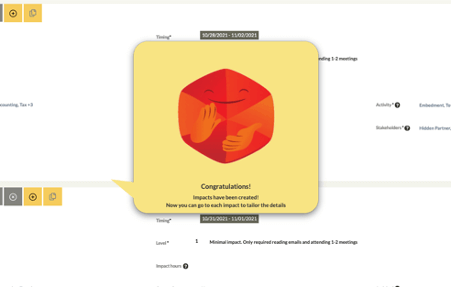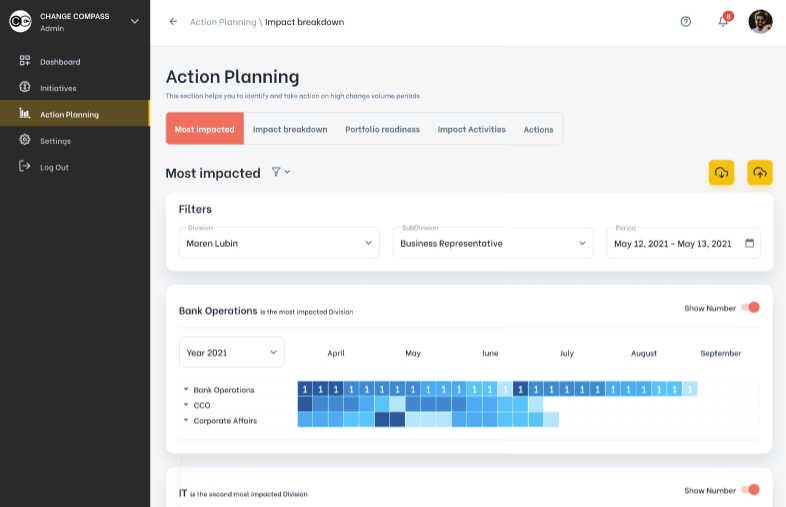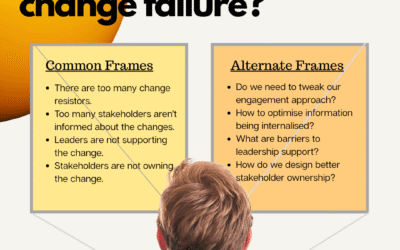Gamification is the application of game elements to non-game activities. Whilst gamification has been around for a long time, it is only recently that it has been formalised as a structured method to achieve specific outcomes.
We see the application of gamification all around us. Yes most of the apps we use on our phones have game design elements. However, more broadly, we can see this all around us. Through gamification design, we can make significant behaviour changes.
Two of my favourite examples are:
1.Improving aim and decreasing spillage in urinals.
Amsterdam airport wanted to keep the urinals clean and reduce spillage. They pinpointed the aimed spot within the urinal design where the least spillage happens. What happened was that men would aim for the fly as a fun activity (or even aiming subconsciously), and thereby reducing spillage.

2. Encouraging physical activity by taking steps vs. the escalator
In Sweden, they did an experiment to see if they could encourage people to take steps over the escalator by making it fun to use steps. This was at Odenplan (where I used to frequent regularly on my way to bars in my younger days), a major subway stop in central Stockholm. They turned the steps into a piano where stepping on a step would the be same as hitting a piano keyboard. The result was that 66% of people chose the steps over the escalator. Here is a video that shows the behaviour of people as they use the stairs. https://www.youtube.com/watch?v=7frzYFcbqjc

You will notice that these elements are not necessarily about playing a ‘game’ per se. Instead, they’ve borrowed elements of game design to engage people and make it more fun. However, ultimately there is a very clear goal and clear behaviours to be achieved.
6-D model of gamification
The 6-D model of gamification is a very practical step-by-step framework to help you design an effective change intervention using gamification. The value of this framework is that it ensures that there are clear objectives and focus before jumping into utilising one of the many gamification tactics.
These are the 6 steps to follow:
- Define Business Objectives – Define the goal you are aiming for. Is it increasing stakeholder engagement scores? Is it increasing the viewership of articles? Or is it getting users to follow the new process?
- Delineate target behaviour – Define the target behaviours you are aiming to achieve. Note that behaviours need to be discrete and concrete. Then, decide how you are going to measure them. For example, let’s say you want to get users to follow the new additional process steps. What actions do you need users to perform? How do we know if these processes have been performed? Can the outcome of performing these steps be traced or observed? Are these documented? Are they easy to report on?
- Describe your players – How well do you know your target audience/users? In this step, you need to clearly articulate and define exactly what they are like. For example, what are their demographics? How do they tend to behave? Do they have a history of behaving in certain ways in certain situations? If you need them to add more steps in a new process will they tend to ignore it?
- Devise activity loops – In this step, we are identifying the key motivations involved to sustain the desired behaviour. Are there particular reinforcements required to sustain this behaviour? Do we need to design feedback loops? For example, if you need to ensure that the user performs 3 additional process steps, what triggers or reinforcements are required? What notifications need to be in place to remind the user and motivate him/her to perform these steps? And how do we reward those behaviours?
- Don’t forget the fun – This step may seem quite generic but nevertheless an important part of the design process. People prefer to perform tasks that are more fun. However, it is not always easy to determine what is considered fun. It is about incorporating the element of interest and fun where possible to increase engagement. For example, can the messaging or graphic design incorporate an element of fun? Or can the notification or reward elements be designed to incorporate fun?
- Deploy appropriate tools – This is the action step. It is about choosing the right gamification tactic to deploy your change. There is a very long list of various gamification tactics to be leveraged. Here, we will review 10 different tactics and demonstrate examples from The Change Compass.

Now that we understand the theory and steps required. Let’s put these into practice.
10 example of gamification elements and how The Change Compass has applied this
1.Onboarding tutorials
The classic approach for change practitioners in implementing changes has tended to rely on training. However, depending on the change being introduced there are more engaging ways to socialise the change.
For example, with a new system there are tools to create context-specific walk-throughs and detailed explanations that are more engaging. These are not necessarily part of the tool design itself. There are digital tools such as Stonly, Help Hero, as well as a myriad of others that may be leveraged to easily design context-specific onboarding.
Here are some examples how we use context-specific onboarding walk-throughs and information.



2. Theme
At The Change Compass we love using the airport analogy because it explains the various components within the system that needs to hum for holistic portfolio change management. Each plane is an initiative and how the airport is run is portfolio management. The available runway is the business change capacity. Stakeholders understand this because it’s a tangible analogy that they have experienced first-hand.
We’ve embedded the airport theme in different parts of the application to create a sense of fun and visually more interesting. For example, here are some examples of how we have done this.


3. Random rewards
This tactic is about creating excitement and unexpected reward to surprise users in a positive way. Ideally, it would bring a smile to users since they were not expecting this pop-up or another form of reward.
For example, we have created various automation features to make it significantly faster for users to enter data. And when the task is completed we surprise users with a pop-up that celebrates this task completion.

Here a pop-up animation provides a pleasant surprise/reward
4. Status/points/leaderboard
The leaderboard concept is quite a common tactic to generate engagement and in this case competition. The idea is that those that have the highest points feel a sense of achievement and recognition. Please note that it depends on the motivation of users and may not work in all contexts.
We have created a user community to promote sharing of practices. In our platform there is a leaderboard that shows who has made the most comments.

5. Customisation
Customisation gives users the ability to tailor and customise their experience. The more users spend time and effort to ‘create their space’ the more wedded and engaged they become. Most people are familiar with the concept of using avatars as an expression of themselves. This is another way of expressing who they are digitally.
In our application we allow users to upload their own avatars. In keeping with the overall airport analogy, we have ready-made avatars of different airline characters for them to choose from. Again, injection a bit of fun into the experience.

6. Challenges/quests
Challenges or quests keep users engaged and interested. It could arouse their curiosity and through this increase their likelihood of undertaking a particular task. It could be a question or a notification to let them know of a new feature. It could also be quizzes or Q&A to challenge users and thereby increasing their knowledge.
7. Sharing knowledge
Building features to allow users to share knowledge and support one another can be a motivating feature for some users. Helping others and building credibility can be intrinsic motivation for some. After all, helping others makes one feel good.
Our Change Tribe community has been a great platform for users to exchange tips and experiences. Different channels are setup to address different types of sharing. For example, ‘Feedback and features’, ‘Sharing practices’, ‘What’s new’, ‘Community tips’.
There are various platforms available for you to build community for users. It can be using your corporate Yammer platform, or others such as Slack or Tribe.
8. Voting/voice
Giving users the ability to have a voice and share their feedback can be powerful and engaging. However, depending on the platform you are using you may need to manage the types of feedback that are openly shared. Giving users the ability to vote can also be quite powerful.
For example, at The Change Compass our features backlog is primarily determined by users and their feedback. This ensures that users feel that they determine how the application is designed and therefore feel more invested.
9. Meaning/purpose
Having a clear and strong of meaning and purpose may seem like a no-brainer for change practitioners. Yet this is a very important one for game design. The most engaging games that instill a strong sense of purpose for the user, where the user feels emersed into executing on the purpose.
In the same way, designing meaning and purpose into all facets of the change intervention is critical. Ideally, with every step of the change journey, the user can feel ingrained into carrying out steps towards the purpose of the change.
For example, in The Change Compass we have an Action Planning module where the application steps the user through the analysis of the data, key observations, patterns, and what actions to take to potentially package or re-sequence the change rollout. This helps to directly address the overall purpose for the user in using the platform.

10. Social discovery
Social discovery is about enabling the support of users to find one another so that they can connect. This helps to support those with shared interests or connections. People are social creatures and we like to find others with whom we have shared interests. Think about designing your change intervention in a way that supports social discovery and networking.
For example, The Change Compass is about sharing initiatives across the organisation and the impacts they have on different parts of the company. Initiative drivers can discover other initiatives and how they may potentially impact the same stakeholders. This leads to better alignment and shared understanding and therefore makes it easier to collaborate for a better business outcome.
Now it’s your turn! What are some of the gamification tactics that you will deploy to improve stakeholder engagement and ensure your change initiative is designed with a view to creating a deeply involving experience for users?
To read more articles about agile practices within change management please click here. Or, to read more about different change approaches click here.






